Hi Gang,
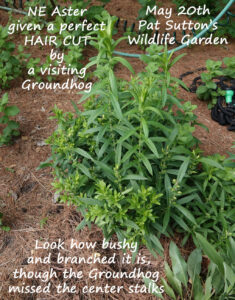 I was not in the garden much this spring due to an unexpected 5-day hospital stay. Boy-oh-boy did the garden get ahead of me quick. During a recent and rejuvenating stroll through I could see that the Groundhog (that has discovered our salad bar) has been busy.
I was not in the garden much this spring due to an unexpected 5-day hospital stay. Boy-oh-boy did the garden get ahead of me quick. During a recent and rejuvenating stroll through I could see that the Groundhog (that has discovered our salad bar) has been busy.
It especially enjoys asters, but hasn’t been too selective nibbling on just about everything. Hmmmmm, I wonder what the garden will look like this year?
If you don’t have a herd of rabbits or a Groundhog or hungry deer, this is the time of year to get out your clippers and give your asters and a few other fall-blooming perennials a HAIR CUT . I cut back New England Aster, Common Blue Wood Aster, Smooth Blue Aster, and Tall Sunflower (my stands of White Wood Aster often do not need haircuts).
Why haircuts, you might ask? It is quite simple. If you want New England Asters and other fall-blooming perennials bushy and full of flowers when they bloom, they need haircuts now, otherwise by fall they will be so top heavy that they are likely to flop over from the weight of flowers on long, unbranched stalks.
Thirty plus years Karen Williams, owner of Flora for Fauna (native plant nursery), shared this sage advice with me about maintaining one of my favorite native perennials, New England Aster, and I’m about to share it with you. Though this post is for folks with plants that are several years old and flourishing, not for brand, spanking new plants that have just been put into the ground this year.
NEW ENGLAND ASTER
2 HAIR CUTS: (roughly) Memorial Day & 4th of July
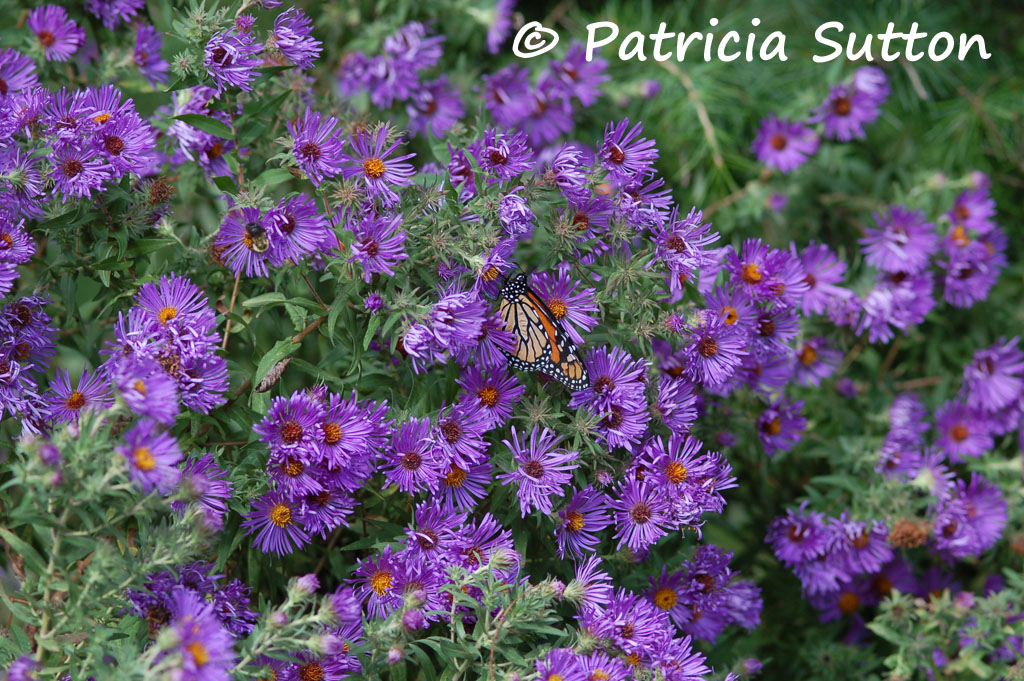
New England Aster can get very tall and top heavy by the time it blooms in the fall. And the last thing any of us want is for its lovely spread of glowing purple flowers, nectar, and joy to be laying on the ground come fall.
To help it grow into a many-branched, bushy plant instead of a tall, gangly, top-heavy plant, all you need to do is to give it 2 hair cuts on or around the 1st two holidays of the growing season: Memorial Day and 4th of July. Of course these dates are not single-day events, but roughly when you want to give New England Aster its hair cuts. Too, you can be the judge if you need to do your hair cuts earlier, or even if the 2nd haircut is needed. Know that you can jump start the process by several weeks to a month some years!
As a wildlife gardener I don’t clean up and toss the cuttings, but instead leave them lay on the ground at the base of the plant. That way any caterpillars that went for a tumble with the cuttings can climb back onto the plant and continue to munch. Doug Tallamy (author of How Can I Help?, Bringing Nature Home, Nature’s Best Hope, and The Nature of Oaks) shares that 100 species of butterflies and moths lay their eggs on our native asters in this ecoregion, making asters one of the TOP Keystone Native Plants used by butterflies and moths for egg laying. Don’t be surprised if some of your cuttings take root and become additional asters!



Around Memorial Day, I cut each stem 1/2 (or 2/3) off (or about a foot or two off the top, depending on how tall it is, if that is easier for you to remember). I use big shears and just chop away. What happens next is that each cut plant stem sends out 2 or more new shoots where it has been cut, in other words it branches and becomes more bushy!
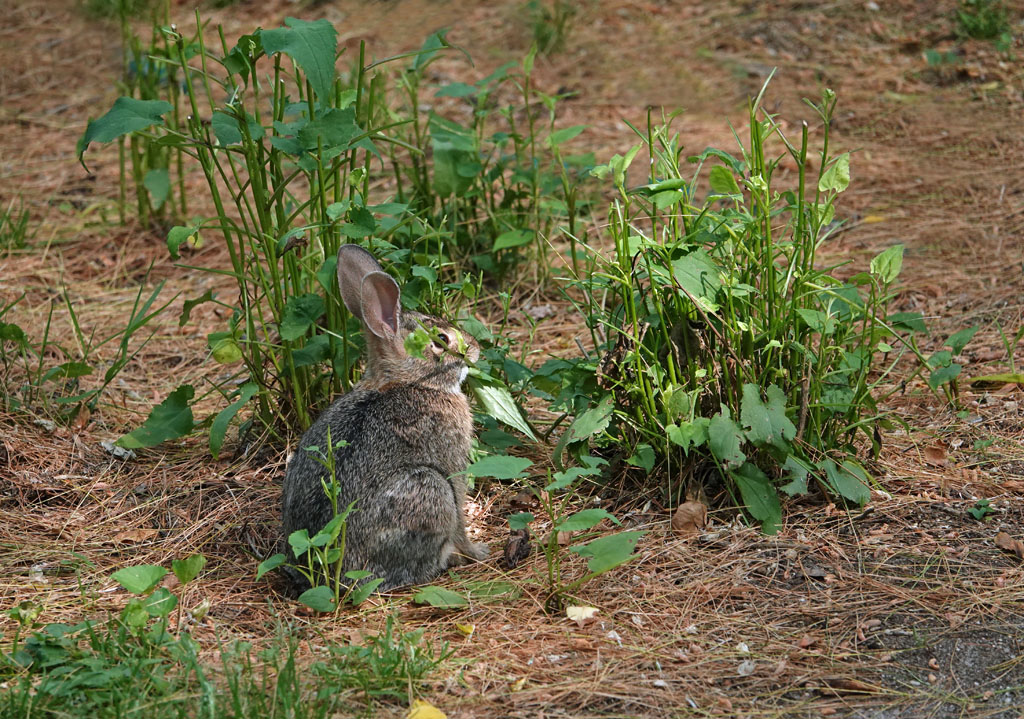
Some of my asters get regular haircuts from plentiful E. Cottontails (they must think our yard is one large salad bowl crafted just for them). I’ve planted the lovely fall-blooming, shade loving Common Blue Wood Aster, Symphyotrichum cordifolium, under our Tulip Tree and in our woods. Despite hungry rabbits it has flourished and spread into other beds, our meadow, the perennial garden, and elsewhere and that pleases me. It is so plentiful that it keeps the rabbits busy and away from most other asters. We’ve fenced our yard, so deer are not an issue for us. But other gardeners share that deer routinely give their asters hair cuts. Our visiting Groundhog arrived in 2020 with the Pandemic. It has been an “on again, off again” garden visitor, disappearing for months at a time only to return and appear quite at home . . . like this late April and May.
If needed, around 4th of July, I give my plants their 2nd hair cut (not back to the 1st cut, but cutting back some of the new growth since Memorial Day). You may want to be more creative for this hair cut and cut the many stems in your plant different lengths. For instance, give the stems in the foreground more of a hair cut, the stems in the middle less of a hair cut, and the stems in the back just a little hair cut. This way your plant stems will bloom at different heights.
You may find that some plants haven’t grown as tall as others, so you may choose to pass on the 2nd hair cut for some plants. If so, you’ll find that these plants will bloom earlier. This staggers the blooming period so that you have New England Aster nectar, color, and joy far longer in your wildlife garden.
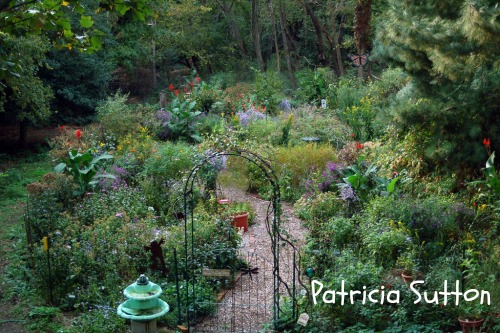
A bit more advice: once given hair cuts, New England Aster has “ugly legs.” The stems below the 1st haircut look “not so nice” . . . the leaves darken and fall off and the stems are quite bare. So you’ll want to have other perennials in the foreground blocking that view, so you’re not looking at ugly bare legs.
You can give 1-2 haircuts to some other fall-blooming perennials that grow tall and flop, so they’ll instead branch and become more bushy:
Goldenrod
Sedum
Sunflower
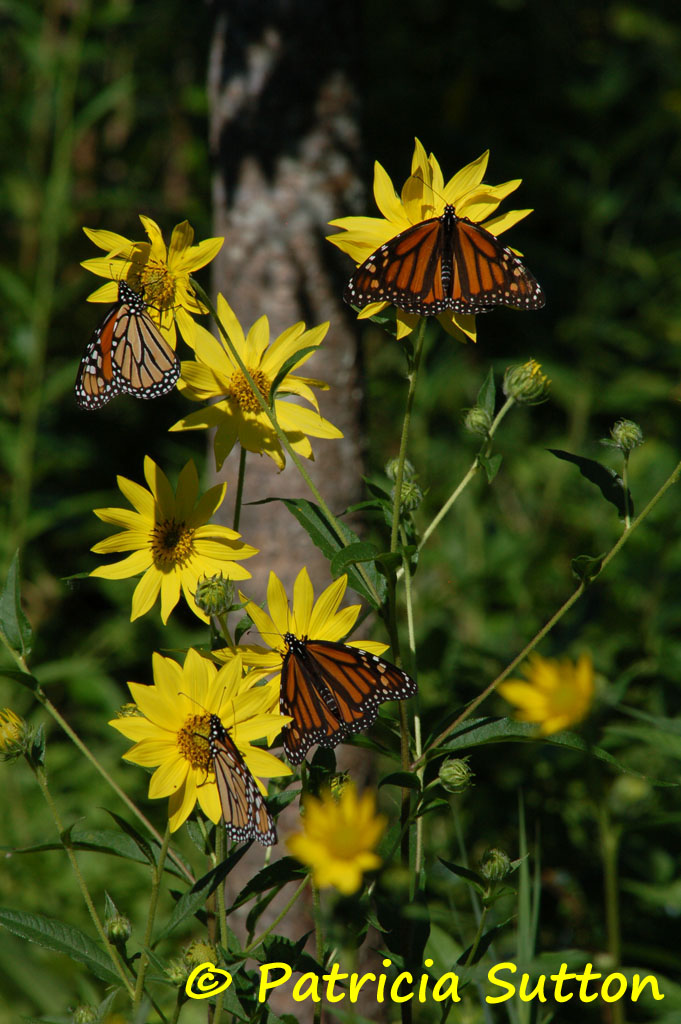

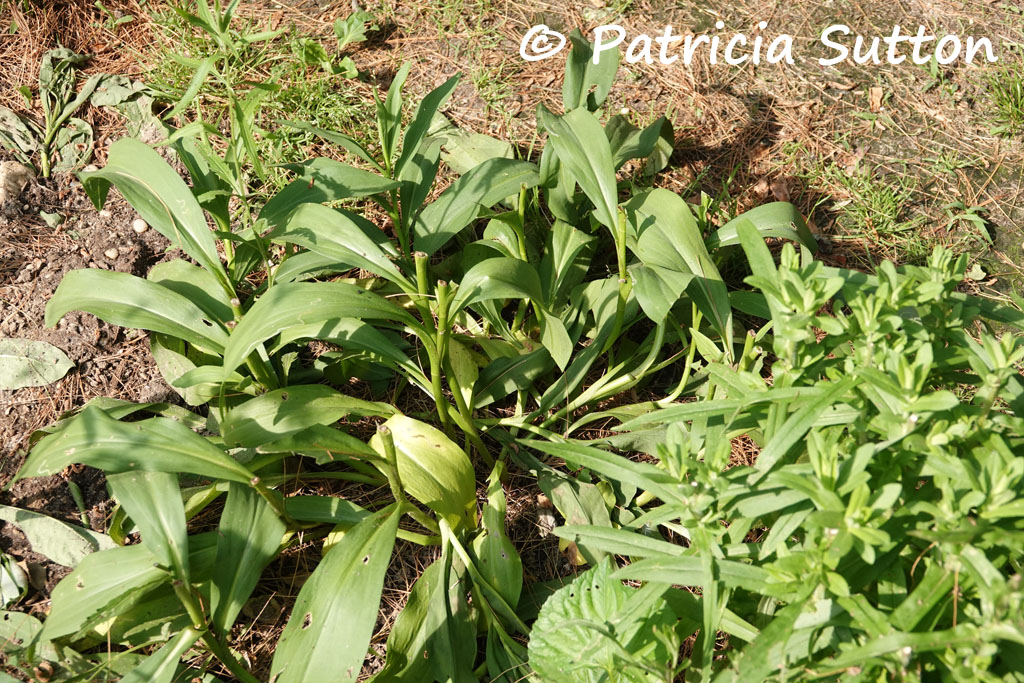
For some summer-blooming plants that grow too tall for your garden, you can give them one haircut around Memorial Day, forcing them to branch, become bushier, and bloom lower. I sometimes do this with some of my favorite summer nectar plants so that I have an easier time seeing and photographing pollinators on them:
Culver’s Root
Garden Phlox (I tried this for the 1st time in 2023)
Ironweed
Joe-pye-weed
Sneezeweed
Blue Vervain
various Bonesets
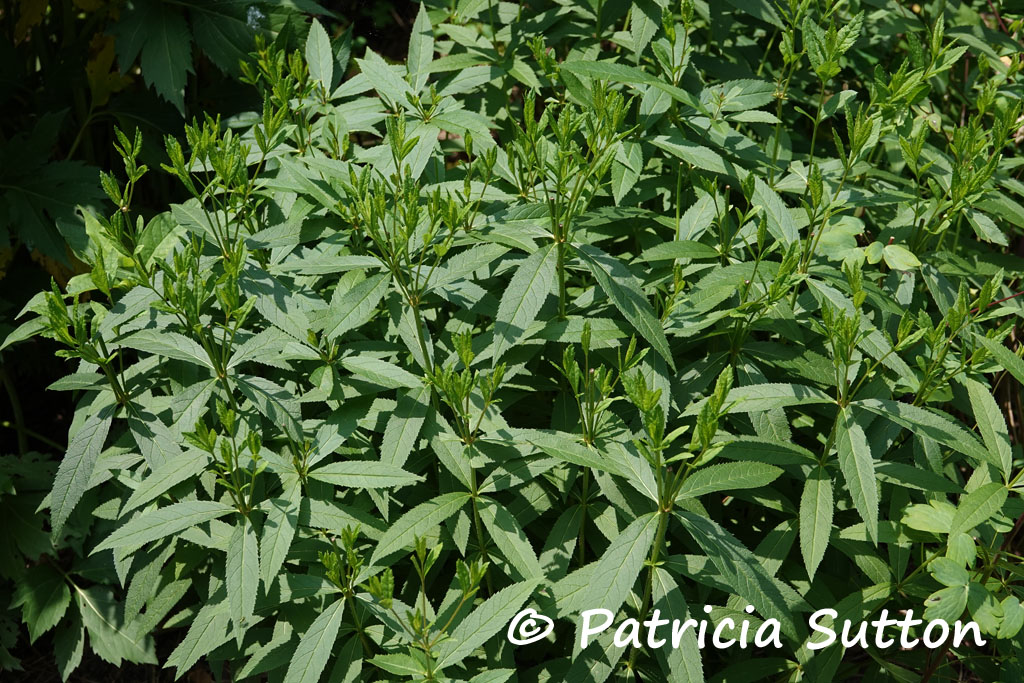
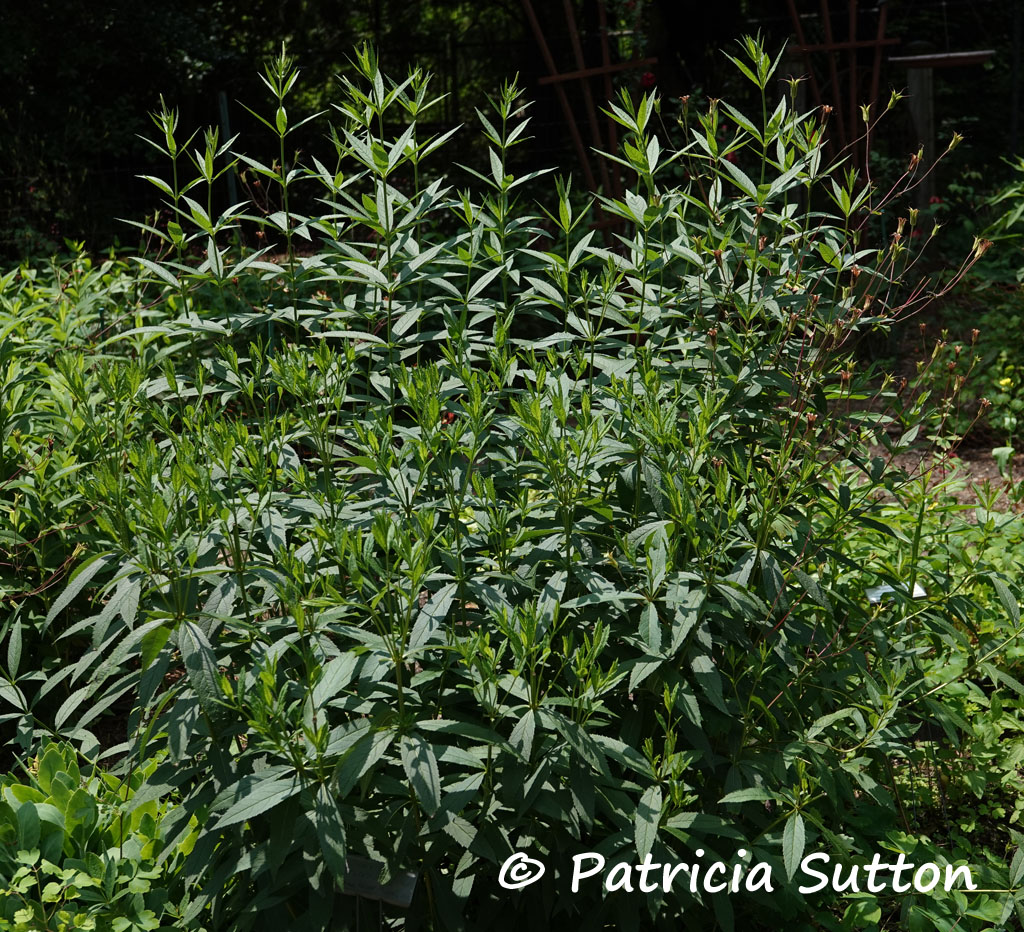
You can always experiment on other fall-blooming perennials that have flopped in your garden. If you’re not sure how hair cuts will turn out on plants other than those I’ve mentioned, try giving a hair cut to one stem ONLY (or if you have several plants of Cut-leafed Coneflower, for example, in your garden, give one of them hair cuts so you can compare results with your uncut plants). Then see how your plant reacts and whether you like the results.
Don’t hesitate to ask a question, but please use the Comment Box at the end of this post, so others can benefit from your question and my answer. Maybe scroll down through previous questions; you may find that your question is already answered.
Happy Wildlife Gardening,
Pat
